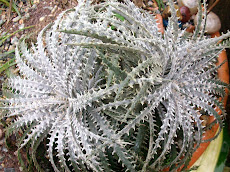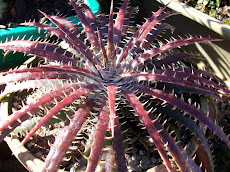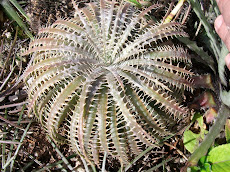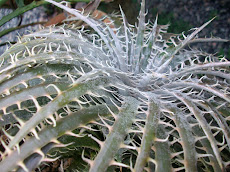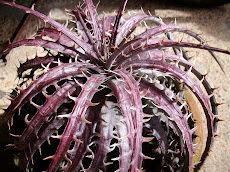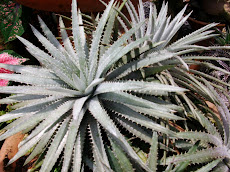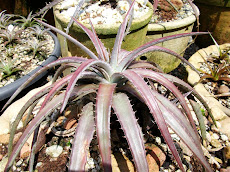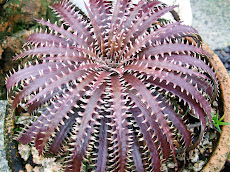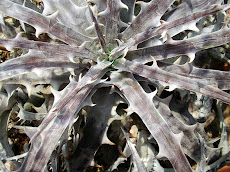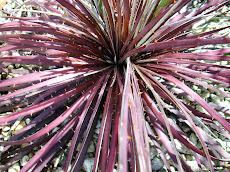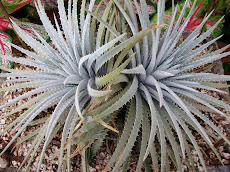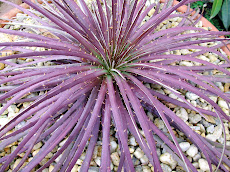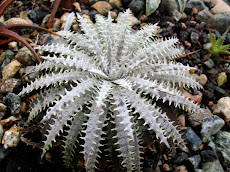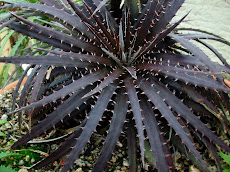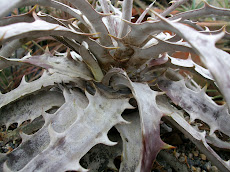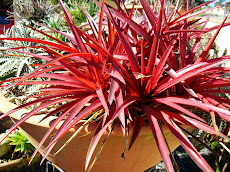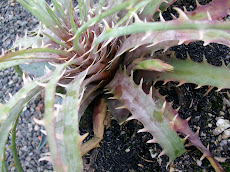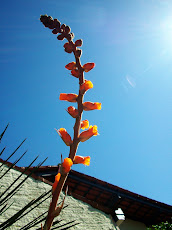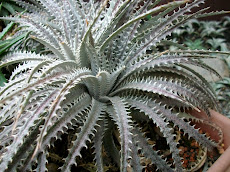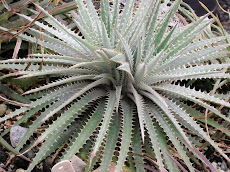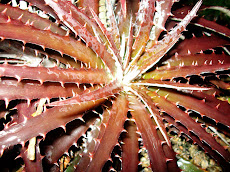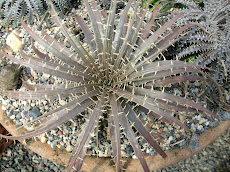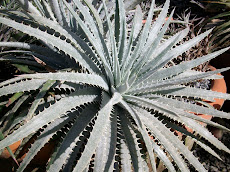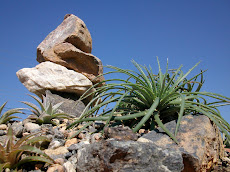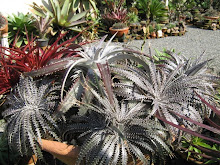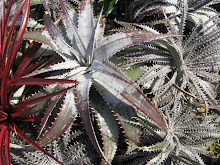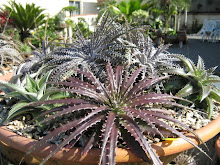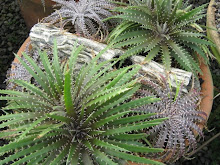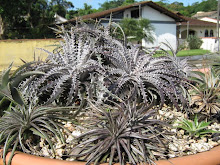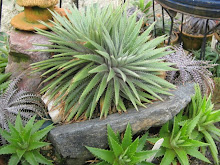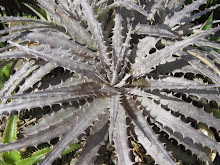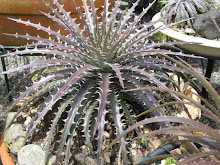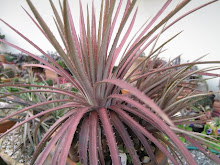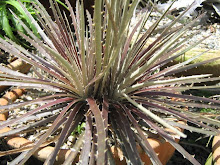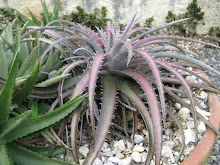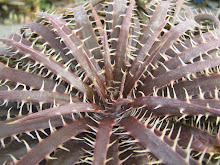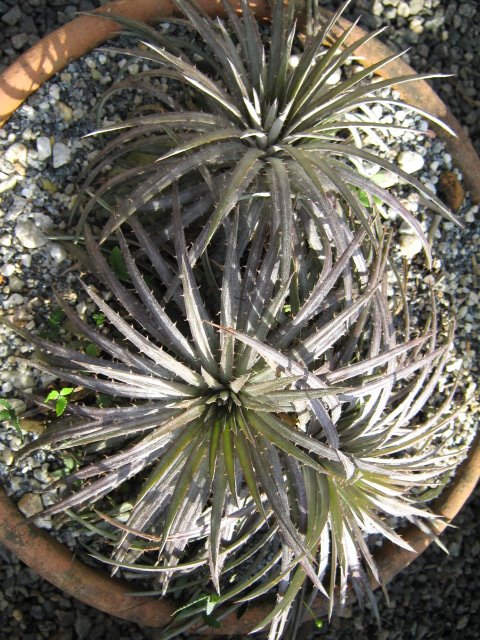
Beautiful and
bi-colored!
Narrow leaved and well armed this is a gracious little Dyckia species.
Santa Catarina has many more Dyckia species than once wondered our
botanists. They, the guys, could not climb the hills or were afraid of being eaten alive
by the Sussuarana our heroic big feline
Felix concolor, the Puma.
These wonderful creatures are getting back to the Santa Catarina Northeast mountains
and may be spotted once in a while. The Puma loves the very same Dyckia habitat
and are frequently spotted on rock fields.
Old famine animals may be dangerous to wandering Dyckia lovers, no doubt.
In Northeast mountains I have one or two dogs with me and never, never I would dare to
climb a mountain alone.
Two years ago during a fog Spring morning Dyckia adventure we saw one Puma on a rock above us in a distance of less than 50 meters.
It took a while to spot the magnificent animal but the beast was watching us for a long time.
The big and impressive Puma was sit looking at us, me and a friend. When we saw the animal it just lift turned back and went out of sight with all its dignity. The dogs are not to chase the animal but to alert us. We were the dangerous animals in that scenery.
It is a blessing to see such a creature and people now are well alerted not to harm any animal.
It would be a very serious crime to do any harm to any living animal.
Let us get back to Dyckias!
Isn´t this here beautiful?
On the rocks at distance you would not see this as a Dyckia but as stone lichen.
The plant leaves a kind of foggy vision and you must get well close to really see it.
 This beautiful small species is about to be described.
This beautiful small species is about to be described.


















































